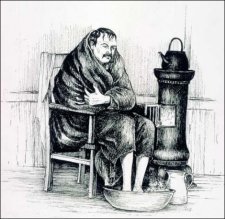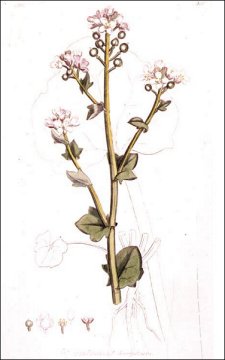| The Peterhead whaling trade |
|
The crew Whaling was a complex and challenging business and needed men who were not only brave but who had a variety of specialized skills. When the Superior sailed to the Davis Strait in 1834 her master Donald Manson was in command of a surgeon, 4 harpooners, 2 boatswains, 5 boatsteers, 2 carpenters, 2 coopers, a manger in charge of lines, 2 seamen, 3 landsmen, 2 apprentices and a steward. One of the harpooners also acted as mate and another as specktioneer, and one boatswain was also skeeman. The Master was responsible for the navigation and management of the vessel and the motivation of its crew, often under difficult and dangerous conditions. He also needed a detailed knowledge of the behaviour and distribution of whales and seals if he was to turn a profit. The Mate was second in command and was often also the chief harpooner. He would usually share the main cabin with the Master and the Surgeon. The surgeon's main duty, of course, was to attend to illness and injuries, but he also usually served as clerk and kept the ship's log up-to-date. The surgeons were usually senior students from the medical schools in Aberdeen, Edinburgh and Glasgow, or recently qualified doctors. Without doubt, the best known surgeon to sail from Peterhead was Arthur Conan Doyle, the author of the Sherlock Holmes novels. In 1880, whilst still a student at Edinburgh, he sailed under Captain John Gray on the Hope (2). The Spektioneer was in charge of the flensing process but the chopping of the blubber and its stowage in barrels by the harpooners and other crew was controlled by the Skeeman, the officer in charge of the ship's hold. Whaling was, for the most part, a young man's business, particularly so for the unskilled labourers, with most in their teens or early twenties. The work was back-breaking and extremely dangerous. Like war, whaling consisted of long periods of hard work and sheer boredom, interrupted with moments of sheer exhilaration and terror. The living conditions below deck would have been rather sordid. The food consisted of rancid cheese and butter, salt beef and pork, all packed into barrels. There was so little fresh fruit and vegetables on board that sea-plague (scurvy) was inevitable for most crew. For such suffering and hardship the crew received a basic monthly wage and usually a share of the profit from the oil and whalebone. In 1834 the master received a total of £120 (£7,229 at today's prices) for about six months work, the surgeon £16 14s (£1,006), the mate £43 8s (£2,614), and the spektioneer £31 18s (£1,921). At the other end of the spectrum the apprentice picked up just 18s 9d (£56), the steward £7 8s 10d (£448) and the line manger £17 4s 3d (£1,037). |


